Talk with our local travel specialist who can help organize your trip.
When is the best time to visit Everest Base Camp?
Everest Base Camp Trek is one of the famous treks in Nepal's Himalayas. The best time to visit Everest Base Camp (EBC) is during Spring (March to May) before the monsoon starts and Autumn (September to November) just after the monsoon rains are stopped. The temperature is warm with less rainfall during these months, and mountain views are perfect. So, if you want to get the best experience of visiting the base camp, you must travel to this place at the right time.
However, during this peak trekking season, the Everest Base Camp trekking trail is flooded with many trekkers. Flights schedules are busy, accommodations on the EBC trail are not easily available due to the overcrowded situation. Likewise, in the summer and winter, there are fewer trekkers on the Everest trail; you can immerse yourself in a more peaceful environment and get the natural feel of the Himalayas of Nepal. So, depending on your interests and weather conditions, you can pick the best time to visit the Everest Base Camp.
Recommended Read:
How much does it cost to trek to Everest Base Camp?
How difficult is Everest Base camp Trek?
Table of Content
Two Best Season To Trek Everest Base Camp
Like any other popular trek in Nepal, the best trekking season for Everest Base Camp is also Spring (March to May) and Autumn (September to November) seasons. During the Everest Base Camp Trek, the trail traverse through two climatic zones; the temperate climate in the low trekking trail, which is the first half of the trek, and the alpine climate in the high Himalayas, which is the second half of the way. Thus, temperatures will vary a few degrees in these two climatic zones, but during this season, you'll not encounter anything too extreme.
Everest Base Camp Trek in Spring Season (March to May)
In Nepal, the spring months are March, April, and May. Weather-wise, spring temperatures are moderate, thus perfect for trekking as it never gets too hot or cold. This season is also called Pre-monsoon season, so you’ll not encounter rainfall till mid-May. During this season, you'll encounter plenty of sunshine, mild temperature, longer daylight hours, and blossom on the trees. Also, the lower trekking trails and the landscape are stunning with the blooming colorful rhododendron flowers and other wildflowers.
Further, the main climbing months, i.e., April and May, also lie in this season. You'll see the colorful tents, climbers, and Sherpas hustling around the base camp area. The days are warm and bright, but nights and mornings are still cold. Moreover, the spring season marks the end of winter, so the temperature slightly increases, but humidity is still low. There is a rare chance of rainfall that means better visibility. You'll get the most transparent view of the mighty Mt. Everest.
The lower hills are warmer and can feel a little humid. In Lukla, the maximum average temperature is 12 degrees Celsius. In contrast, the high Himalayas such as EBC and Kala Patthar are cold with a minimum average temperature of – 2 degrees Celsius, especially in the morning and night. Likewise, the winds speed will decline to 14km/hr with 7 hours of daylight. This season is also called pre-monsoon season, so rainfall is rare. Thus, with pleasant weather conditions, better visibility, and wildflower blossoming, this is considered the best time to visit Everest Base Camp.
Everest Base Camp Trek in Autumn Season (September to November)
Autumn is another best time to visit Everest Base Camp as the summer heat has gone and the rains have vanished. This is also called a post-monsoon season that begins from September to November. There is no chance of rainfall, so the mountain views are striking during this time. These months are driest, with favorable weather conditions neither too hot in the lower region nor too cold in the high Himalayas. Once again, in the EBC trail, you'll experience pleasant weather with mild temperature and less rainfall, making a trek in the EBC area a joy.
The daytime temperature is warm in the autumn season. In Lukla, the average daytime temperature is 18 degrees Celsius. When the sun goes down, the temperature decreases to a minimum average of -11 degrees Celsius. Further, in the EBC and Kala Patthar, the maximum temperature is 14 degrees Celsius, and the minimum temperature is -10 degrees Celsius. During this season, there is a rare chance of rainfall. The wind speed is also minimal, 14 km/hr, while daylight is 7 hours. In addition, October is an ideal time to experience the famous Mani Rimdu Festival of the Everest region. You can enjoy the colorful mask dance, humorous dances, chanting prayers during which you can deeply experience the nomad culture of the Himalayan people.
Featured Trips
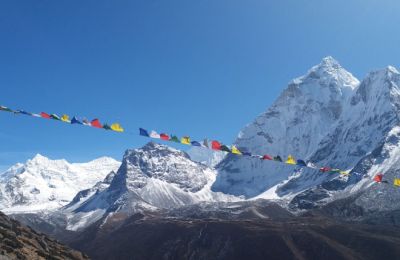
Everest Base Camp Trek With Gokyo Lakes Via EBC - 18 days
Stunning Everest Base Camp Trek with Gokyo Lake – 18 days lets you explore the wilder side of Everest Region. Enjoy Gokyo Lakes trek with Cho La pass crossing.
Inquire Now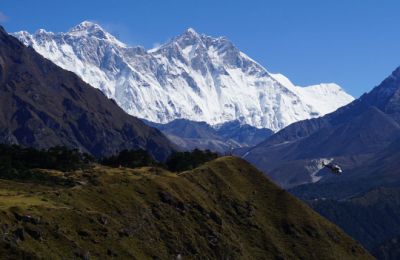
Everest Base Camp Trek - 14 days
Looking for an exciting Himalayan experience? Join us on our 14 day Everest Base Camp Trek - get ready to be stunned by breathtaking views and discover magical Nepalese cultures!
Inquire NowWhere to travel next?
Get help from our travel specialists for holiday ideas that matches your interests.
Handy Travel Tips For Visiting Everest Base Camp In Peak Season
Many trekkers favored the autumn and spring seasons for EBC trek because of pleasant weather, amazing scenery, mountain views, refreshing walk, and unbeatable Everest experience. Thus, you might face some problems such as over-crowded trail, booking issues, etc. So, here are some essential travel tips that can help make an EBC trek experience much more enjoyable and fulfilling.
Advanced Booking
As most trekkers prefer autumn and spring, booking your trip as early as possible is suggested. Since the influx of tourists from both national and internationally might create limited accommodation booking in this peak season. Also, during the May Everest summit expedition, the trekking route will be busy with climbers and Sherpas in these peak months. Likewise, most travelers book flight tickets to Lukla far in advance during peak season. So, getting the flight tickets instantly might be another challenging factor, so booking as early as possible is a good idea.
Hire a Guide/Porter
As mentioned earlier, spring and autumn are the best time to visit Everest Base Camp Trek. So, the trails are full of trekkers; there is no chance of getting the EBC trail to yourself. Besides, you also might have to struggle to pick the best accommodation first. So, trekking with an experienced guide would be wise as, during busy seasons, they will help secure beds for you, which might be challenging while trekking independently.
Alternate Route
Undoubtedly, the classic EBC trail is the most famous and trekked route in Everest. Also, now you are familiar with the best time to visit Everest Base Camp, spring and autumn. While these seasons are best for this famous EBC trek, these months bring challenges such as overcrowded trails, flight tickets, the best accommodations that are not readily available, etc.
Thus, you can opt for any of these alternative trekking routes in the Everest region to skip these issues, as these alternative trails don't see the same number of trekkers even in the peak trekking seasons. No wonder all these routes offer the same wonderful glimpse of the Everest region's unique landscape, nature, and culture.
Jiri to Everest Base Camp Trek
Jiri to Everest Base Camp Trek is the best alternative to flying to Lukla from Kathmandu. The tour starts from Jiri village and leads some quiet trails to enter the Khumbu valley. Early western mountaineers followed this trail to get to the Everest region before the Lukla airport was built, so this route is called "Pioneers Route."
Everest Base Camp Trek with Gokyo Lakes
The Everest Base Camp Trek with Gokyo Lakes is one of the famous alternatives to classic EBC, but this route still doesn't receive many visitors. In addition to climbing Kala Patthar, this trek also takes you to the summit of Gokyo Ri at an altitude of 5,357m. Like Kala Patthar, this viewpoint offers majestic views of Mt. Everest and other surrounding peaks. Nowadays, most trekkers prefer this trek is in the peak seasons to skip the crowd.
Phalpu to Everest Base Camp Trek
This Phalpu to Everest Base Camp Trek is another less crowded alternative trail that leads to the base of the world's highest peak Mt. Everest. The trek begins from the Phalpu and connects the classic Jiri to the Everest Base Camp trail. Apart from the regular EBC trail, this trek allows one to experience some new routes and discover the unique culture, traditions, lifestyle of some traditional villages of Phalpu and Imja Valley.
Arun Valley to Everest Base Camp Trek
The Arun Valley to EBC trek is another alternative route that leads you via the off-beaten track of the world's deepest Arun valley to EBC. The trek follows some of the EBC trails but diverges in some places so that you can get an empty route and enjoy some unique culture and natural beauty of the region. Besides EBC and Kala Patthar, this trek's major highlights are Makalu Barun National Park and Arun Valley.
Three Passes Trek
In the Everest region, the Three Passes Trek is one of the challenging treks. It is a circuit trek so you can do it either in clockwise or anti-clockwise directions. As the name suggests, you have to cross three challenging high passes of the region during the trek. So, this trek is not recommended during the winter as these passes are closed due to heavy snowfall. But this trek is a good option for experienced trekkers who want to avoid huge crowds still enjoying the significant highlights of the EBC trek.
Featured Trips
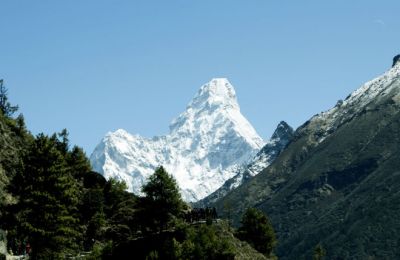
Short Everest Base Camp Trek Itinerary - 12 days
Short Everest Base Camp Trek itinerary is a fast-paced journey in the isolated ethnic Sherpa settlement at Khumbu region. 12 days itinerary is suited for those who are short on time but wish to set foot on Everest Base Camp
Inquire Now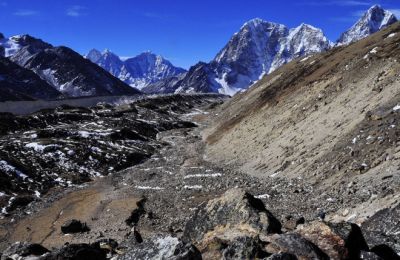
Jiri to Everest Base Camp trek - 21 days
Jiri to Everest Base Camp trek is a classic trekking trail to the foot of the world's highest mountain, Mount Everest. Kala Patthar at 5,550m is the highest point of this trek.
Inquire NowWhere to travel next?
Get help from our travel specialists for holiday ideas that matches your interests.
Final Say,
With milder weather, clear skies, incredible mountain views, and less rainfall, the best time to visit Everest Base Camp is spring and autumn. While these peak seasons are ideal times for EBC trek, there is nothing to stop you from trekking in summer and winter. The only thing during off trekking seasons you must be extra cautious regarding weather conditions and flight cancellations. Regardless of the heavy rainfall in the morning, summer is another good time to visit the EBC. Green hills, lush forests, a clear sky, best mountain views will reward you during the summer. However, you need to be extra cautious regarding the slippery, muddy trails.
Winter is not the best time but not necessarily bad for the EBC trek. Temperatures might get too cold, so you need to prepare for freezing conditions. However, the skies are clear, and the mountains are beautiful. Definitely, you don't have to share the trekking trail with other trekkers during this off-season. Further, you can also opt for the luxury tour packages such as Luxury Kongde Trek with EBC and Kala Patthar Tour during winter.
After getting all these basic ideas on the best time to visit Everest Base Camp, you can contact us for more advice and plan your trek as per your interests. With over one decade of experience running customized treks and tours, we are ready to work with you and customize your perfect Everest Base Camp Trek.
- Written by: Sudina Manandhar
Updated: Mar, 8, 2022

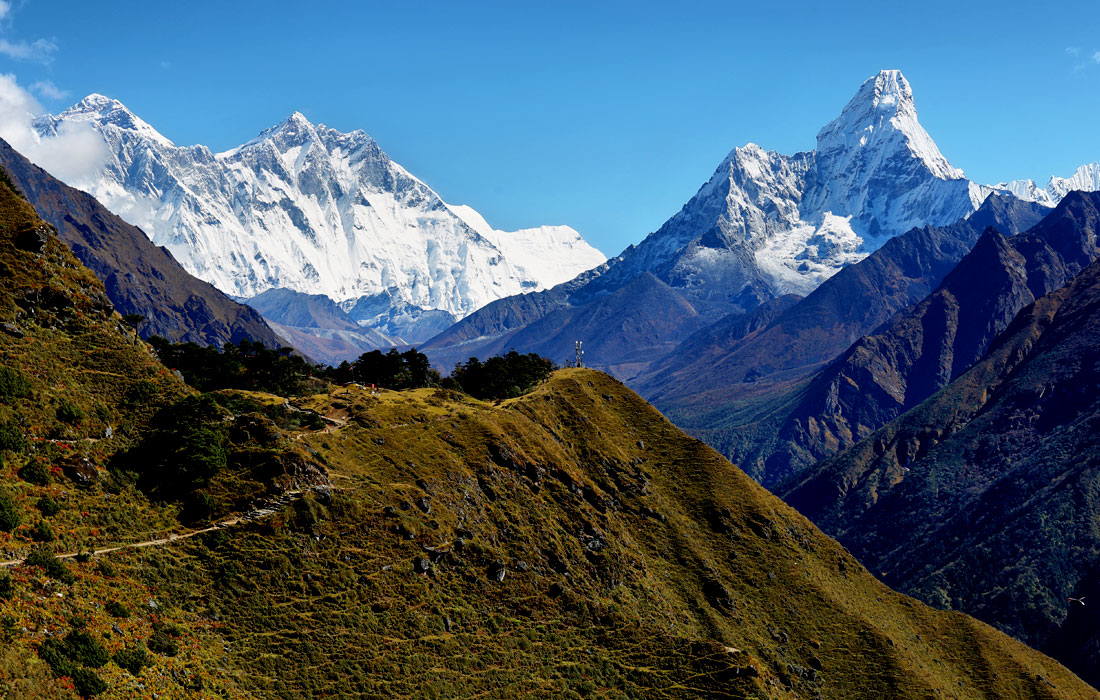


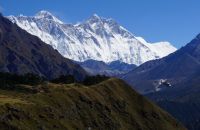
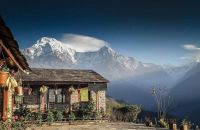
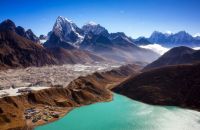
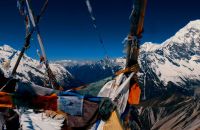
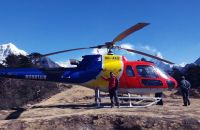
















Recent Comments
Thank you for sharing the information, really enjoyed reading it.
We did it in winter, and we do not suggest it to anyone, Nepali as well. But if you want to explore the base camp in winter, you've to be fully prepared for the extreme coldness.